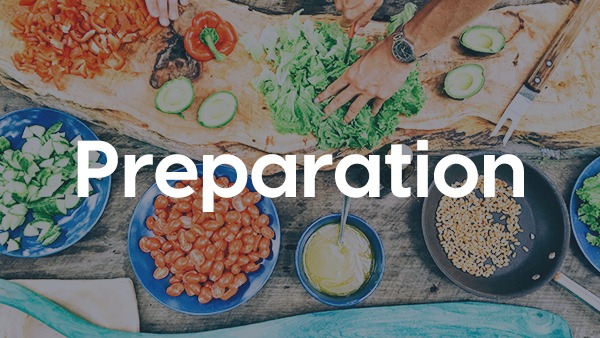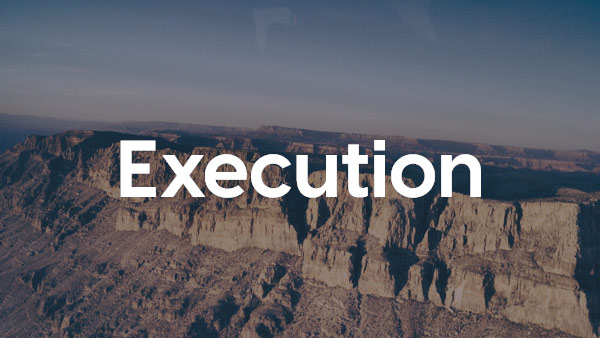Writing for an online audience isn’t easy. You have to stand out from a very large crowd. You need to have something that’s worth saying. And you need to say it in a way that’s readable.
A balance I’m often making as a marketer is between getting something 100% perfect and getting it live. I need to remind myself that perfection doesn’t exist and it’s the enemy of progress.
What I do need to keep front and center, particularly with content, is my audience. What experience will they have when reading my blog? What will they get out of it? Am I making good use of my audiences time?
If I can answer yes to all of those, I know I’m on the right track.
With that in mind, I’ve pulled together eight steps that we follow at readable.io and heartily recommend.
They’re great for those new to content marketing, or just looking for ways to improve their writing.
1. Fully understand your target audience and the content they need
Get to the heart of what content your target audience is looking for. You need to ensure you’re creating content that fits with readers needs and what it is your organization does.
There’s no point in producing content in order to try and rank on Google that doesn’t resonate with your audience or fit with your brand. You’ll quickly find you’ve wasted a lot of time and don’t have anything in return.
Instead, find your target audience’s niche and provide content for them that is of genuine interest.
2. Creating content that is of genuine interest
You need to take a step back and have an honest look at what you are doing. Is your content really useful to other people or are you falling into the ‘me, me, me’ trap?
Your content has to be authentic and focus on building a relationship with your readers.
There’s no harm in promoting your service or product within a blog, but don’t just make it a sales pitch. Give them something they can take away and use without having to spend money with you.
The more people love you for your content and support, the more they will believe in you as a writer/brand. Meaning you create a healthy reader base from which new customers and new revenue can emerge.
Let’s look at some examples of how you could put this into practice.
Specialist kids shoe store. Offer a handy guide on how to choose the right shoes for school and how best to look after them. Or straightforward advice on how to use the brake on your scooter and not your new shoes. Both blogs can finish off by offering a 10% discount coupon to all who join your newsletter.
Accountants for local businesses. Potential blog titles:
- How to choose your business name
- A beginners guide to local SEO
- 10 ways to promote a Christmas sale
- How to run a successful seasonal business
Music festivals. The don’t be all ‘me, me, me’ part of my advice kind slightly goes out of the window here. Festivals do need to shout loud about who’s on the bill. But, they can take it further and deepen audience relations. Let’s pretend I run a festival called Glastazia – a boy can dream… Some comms I would send include:
- First timers guide to enjoying Glastazia
- Can’t wait to see you at Glastazia – message from the headline act
- How to enjoy Glastazia safely
- A veterans guide to Glastazia’s best food stalls… and toilets
- 100 things you don’t want to miss at Glastazia
3. Understand how your content fits together
Your content strategy is like a jigsaw puzzle. One you’ll never solve unless you can see a picture of how it all fits together.
The great thing is, you can draw that picture through three simple tasks:
Post-it note session. Anyone who’s worked with me knows I love a good post-it note session. It allows me to see the bigger picture and work from the top down. Take yourself and your team away from your computers and physically map out your current and potential content. The open converse and equal platform this creates for the whole team are priceless.
Mind maps. To pull together everything from the post-it notes, I use a mindmap tool called SimpleMind. This allows me to go deeper into how areas of our content interact with each other. Gaps and opportunities are easier to spot.
Content calendar. Everything in content production works better when there’s a plan that’s easily visible to the wider team. Asana is a great tool for this. It allows you to get fully on top of your content and the work needed to produce it.
Underpinning all three of the tasks is perspective. Being too close to a project can stop you from seeing the obvious. A second or third pair of eyes can help you see something that you’ve missed or is unlikely to work.
4. Length of content is appropriate to the message
Too short, not enough info is given and leaves your reader not fully understanding your message. Too long, you become a bore.
5. The format of your blog posting and the design of your content
Content comes in all shapes and sizes. To keep things simple, let’s just look at how you should tackle a blog post.
- Short, punchy sentences and paragraphs
- Text at a suitable height
- Optimise images so that file size is as low it can go without affecting image quality
- Avoid large graphics or images, especially busy ones. These can be hard to digest on smaller screens
- White space creates a great element of calm. One that allows your reader view your content without interruption.
Good example: A hands-on guide to mobile-first responsive design
Bad example: lingscars.com/blog
- Call to actions are essential, but so often overlooked. There has to be a good balance between content and CTAs. I tend to favour them being at the end of each block of text, or in a side column. Too many will kill the flow of your copy. Too few will kill conversion.
Mobile should be high on the agenda of everything you do online. It’s how the vast majority of people are digesting content, in particular if you are B2C.
In B2B desktop still rules and I can’t see that changing for the time being. However, mobile first practices should still be adopted to ensure your content is readable on any device.
6. Edit, edit and then edit some more
After writing a long letter, Blaise Pascal summed up poor content marketing 400 years before it was even a thing.
“If I had more time, I would have written you a shorter letter.”
Every word has to add value. If it doesn’t, get rid. Don’t be beholden to the writing a long piece of content if your message doesn’t need it.
7. Run all of your content through ReadablePro
It’s OK, don’t run for the hills. This isn’t a sales pitch… Well, maybe just a small one but, I like to think, one that’s in context. To be fair, you should have seen it coming :)
ReadablePro is built with readability in mind. Its sole purpose is to help writers produce clearer copy.
By running your content through ReadablePro’s scoring tools you can clearly see what you need to work on:
- Are your sentences too long?
- Do sentences and words have too many syllables?
- Is your copy full of buzzwords?
- Are you using passive voice?
- Too many adverbs being used?
- Is your tone formal or conversational
- and more
8. Fine tune your message
Chances are, you won’t get it right the first time. But, you can learn from every piece of content you create and send out.
Use Google analytics to understand people’s actions on your website.
- How many people are reading your content
- How long are they staying for?
- Is your bounce rate too high?
Once people have read your content, are they taking the actions you want them to? Such as signing up for your newsletter or going on to visit a product page.
If the answer is no, you’ll need to look at how your call to actions and your copy are working together. It could be a simple as tweaking the design of your CTA. Or it could be something more damaging, like a disconnect between copy at CTA.
Social is a great indicator of how your content is being digested. Shares, likes and comments will give you a wealth of information on how valued your content is.
If you think your content is doing well onsite and socially, fantastic. Keep doing exactly what you are doing. If not, it’s time iterate and tweak your message.
Make sure you read the signals correctly. You can waste a lot of time and effort by going down the wrong road.
Don’t stop until you get it right.
In summary
Writing content is all about your audience and your message.
Understand your audience. Know your message. Be authentic and build a relationship.





